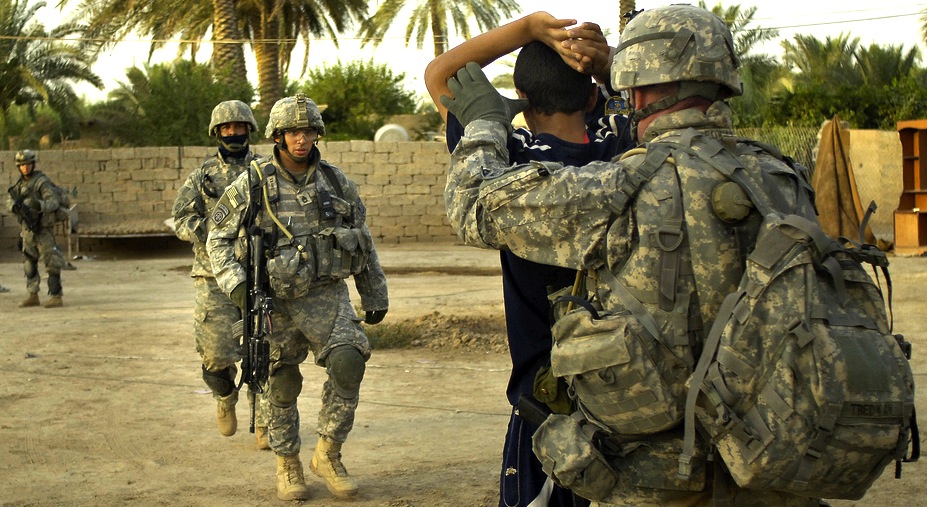
The
Australian Government has consistently maintained that Australian military
personnel had no involvement in the detention of captives in Iraq. However, a classified US memo obtained by the Public Interest Advocacy Centre (PIAC) makes it clear
that Australia was deeply entangled in the capture and detention of Iraqis.
‘An official US military report obtained by PIAC confirms that Australian troops were accompanied by just one US soldier when they captured the suspected combatants in western Iraq,’ PIAC chief executive Edward Santow said today.
The classified US military report is written by officers from a US task force that coordinated coalition operations in western Iraq, using American, British and Australian troops. It is signed by a US Army Major. The
report confirms that Australian special forces worked closely with American and
British military personnel in the capture and transport of more than 60 Iraqi
prisoners to detention facility known as H1 on 11 April 2003.
Prior
to their transfer to H1, the prisoners had sandbags placed over their heads and
their hands were zip-tied. One of the prisoners, Tanik Mahmud, died enroute, cause of death unknown.
The
US report states that three Coalition elements were involved in the
capture and transport of so-called enemy prisoners of war (or EPW).
The
report names these three Coalition elements as: Task Force 64, the Australian
special forces task group under the tactical control of this headquarters; Task
Force 14, the British special forces task group, also under the tactical
control of this headquarters; and Task Force Seminole, the US Army
civil-military affairs task group.
The
US report notes that the Australian forces
were accompanied by one US Air Force Special Tactics Squadron member.
Under
the circumstances, some doubt exists as to which party is the Detaining Power
for purposes of responsibilities under the Geneva Conventions, the report notes.
The
report went on to state: The tri-partite agreement between the United States,
the United Kingdom, and Australia, dated 23 March 03, provides that in such
circumstances, all parties will be jointly responsible until the Detaining
Power has by mutual agreement been determined.
PIAC
understands that Task Force 64 was the codename for a squadron of 150
Australian SAS troops who played a key role in operations in Iraq.
Documents obtained by PIAC under Freedom of Information laws have established that on 11 April
2003, 20 members of the Australian Special Air Service (SAS) captured 66 Iraqi,
Iranian and Syrian men who were driving through the western desert of Iraq. The SAS held the men for
ten hours before they were transported to the H1 facility.
Related links:
- See the PIAC investigation of Australian military detention practices
- PIAC media statement: Australia complicit in illegal military detention
- Read Memo states Defence role in death of Iraq prisoner, SMH 10 Feb 2012
- Read Australia’s link to secret Iraq prisons, SMH, 9 Feb 2012
- Read Australia ‘integral’ in secret jail, The Age, 9 Feb 2012
- Read RAF helicopter death revelation leads to secret Iraq detention camp, Guardian, 7 Feb 2012
- Listen to PIAC’s Edward Santow on Radio National, 9 Feb 2012
- Listen to the AM report, 9 Feb 2012
- Australia’s Defence Dept denies links to secret prisons, ABC Radio Australia, 9 Feb 2012
- Google news
Photo: Flickr